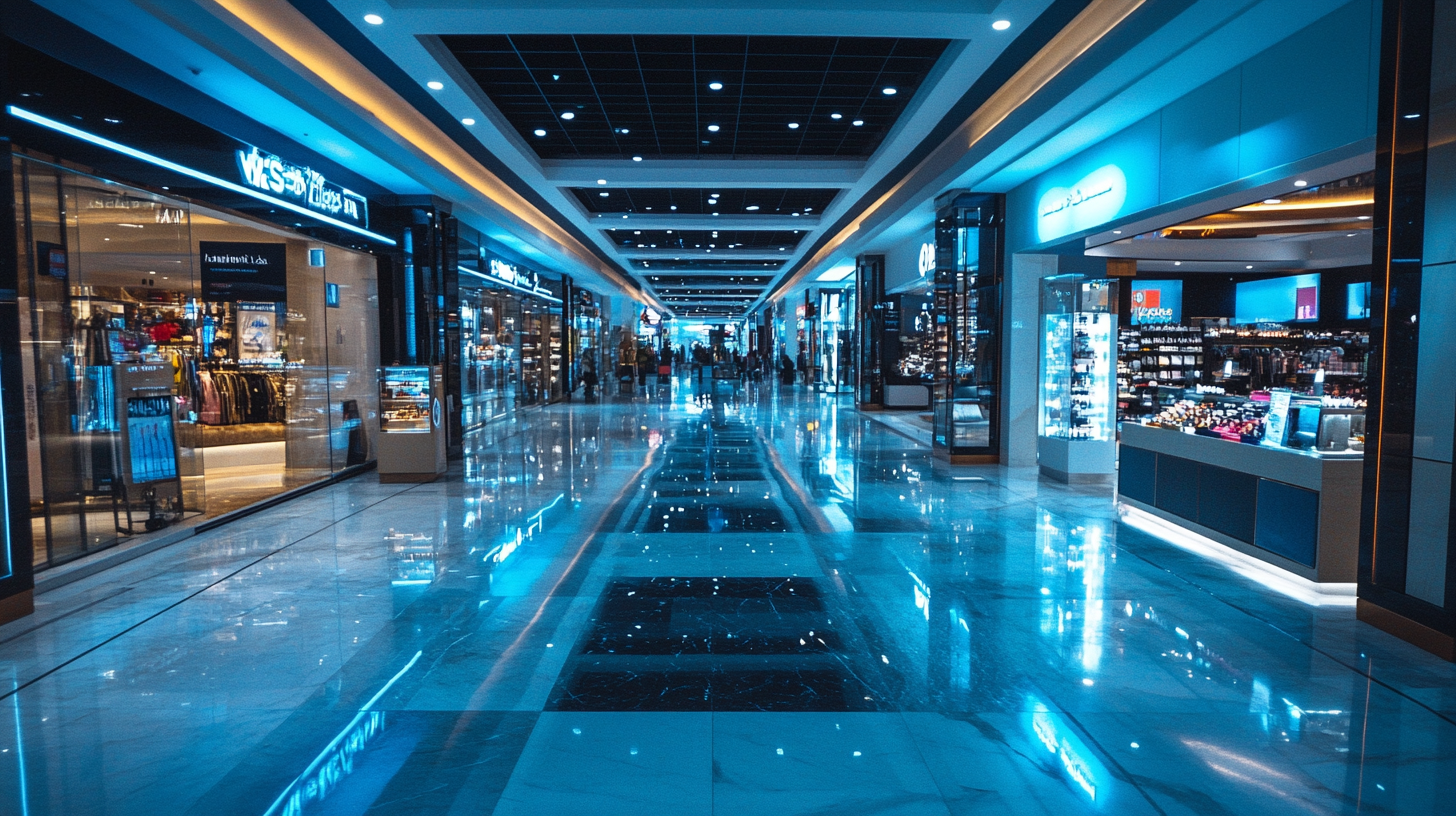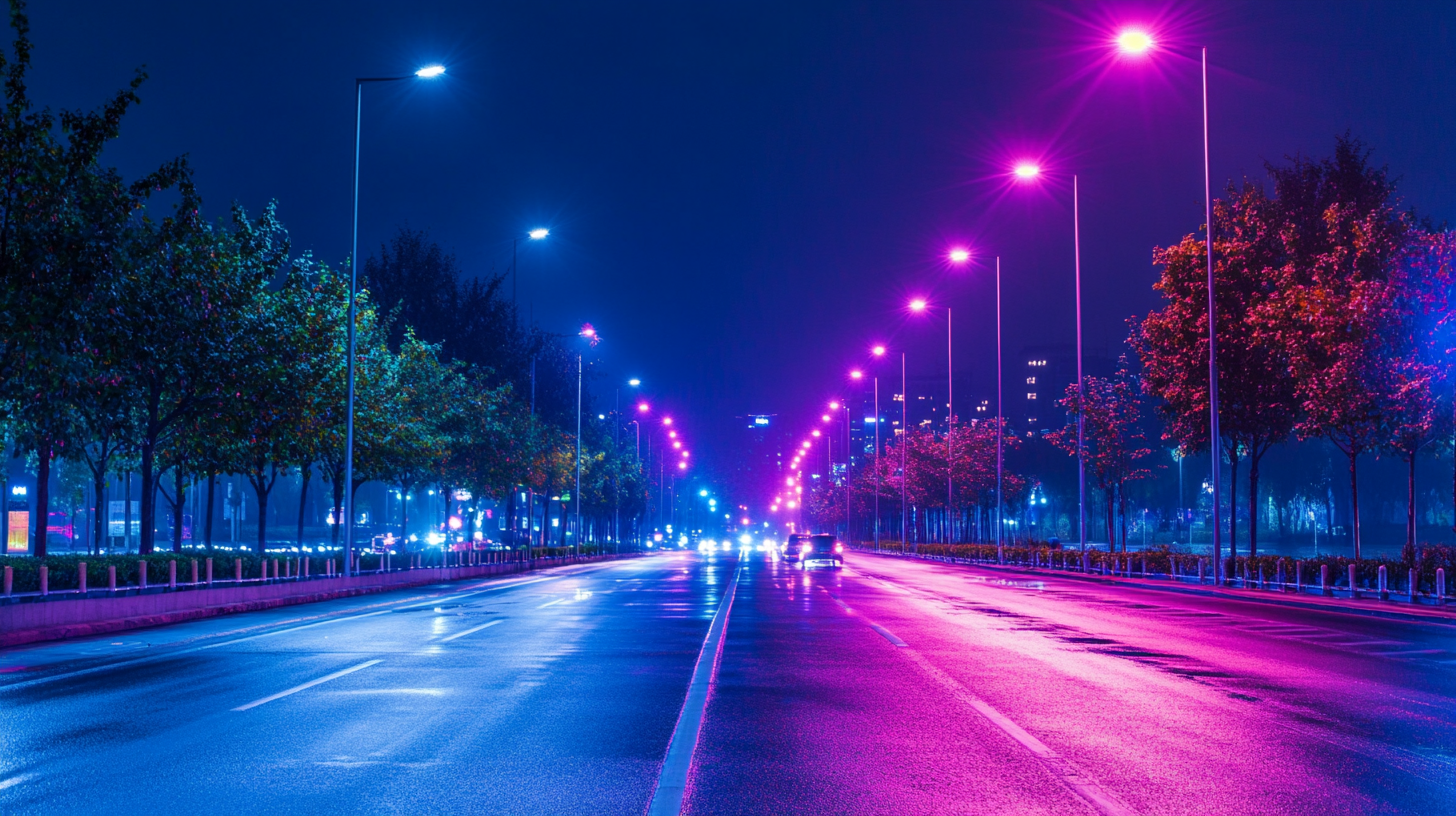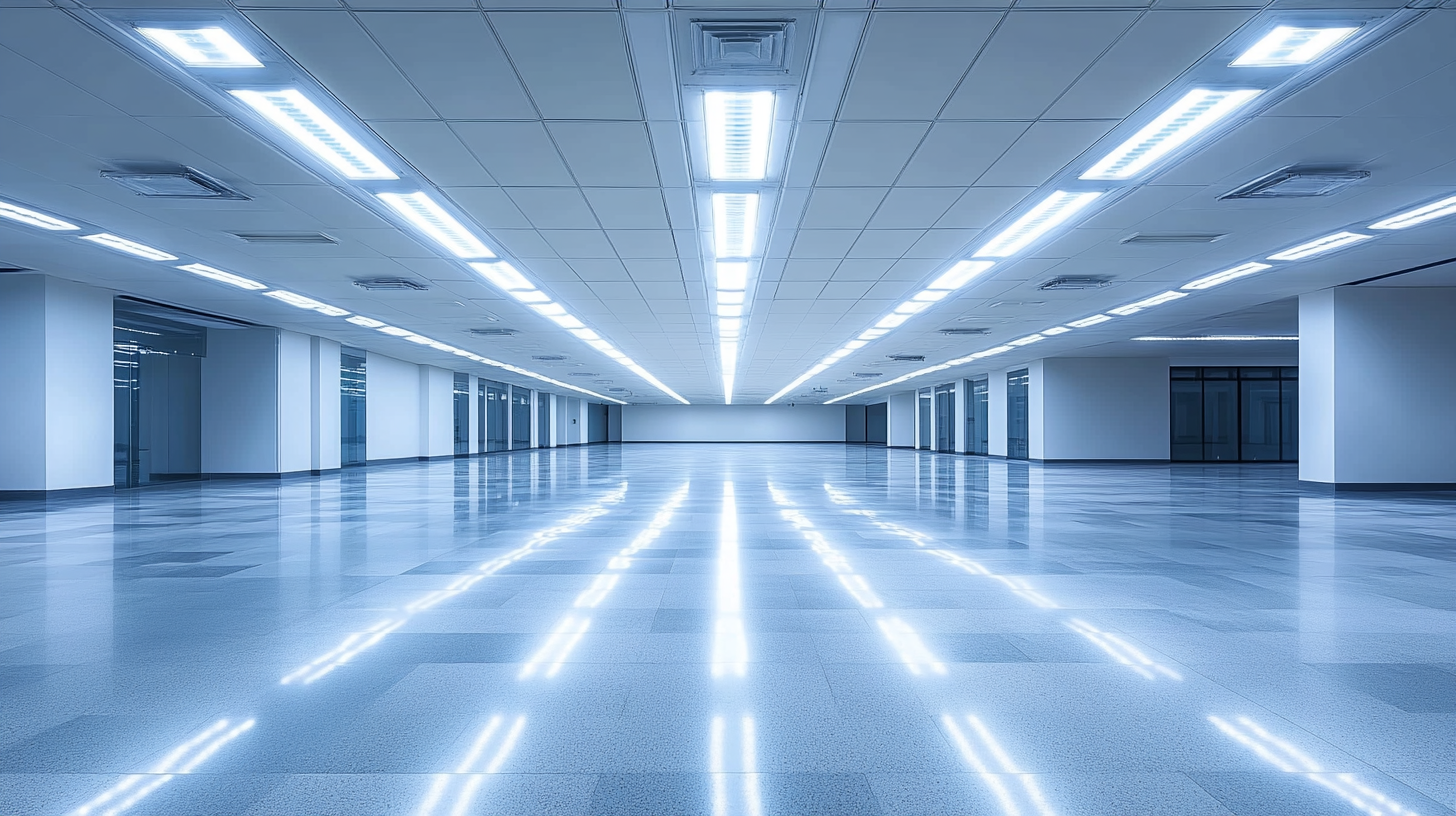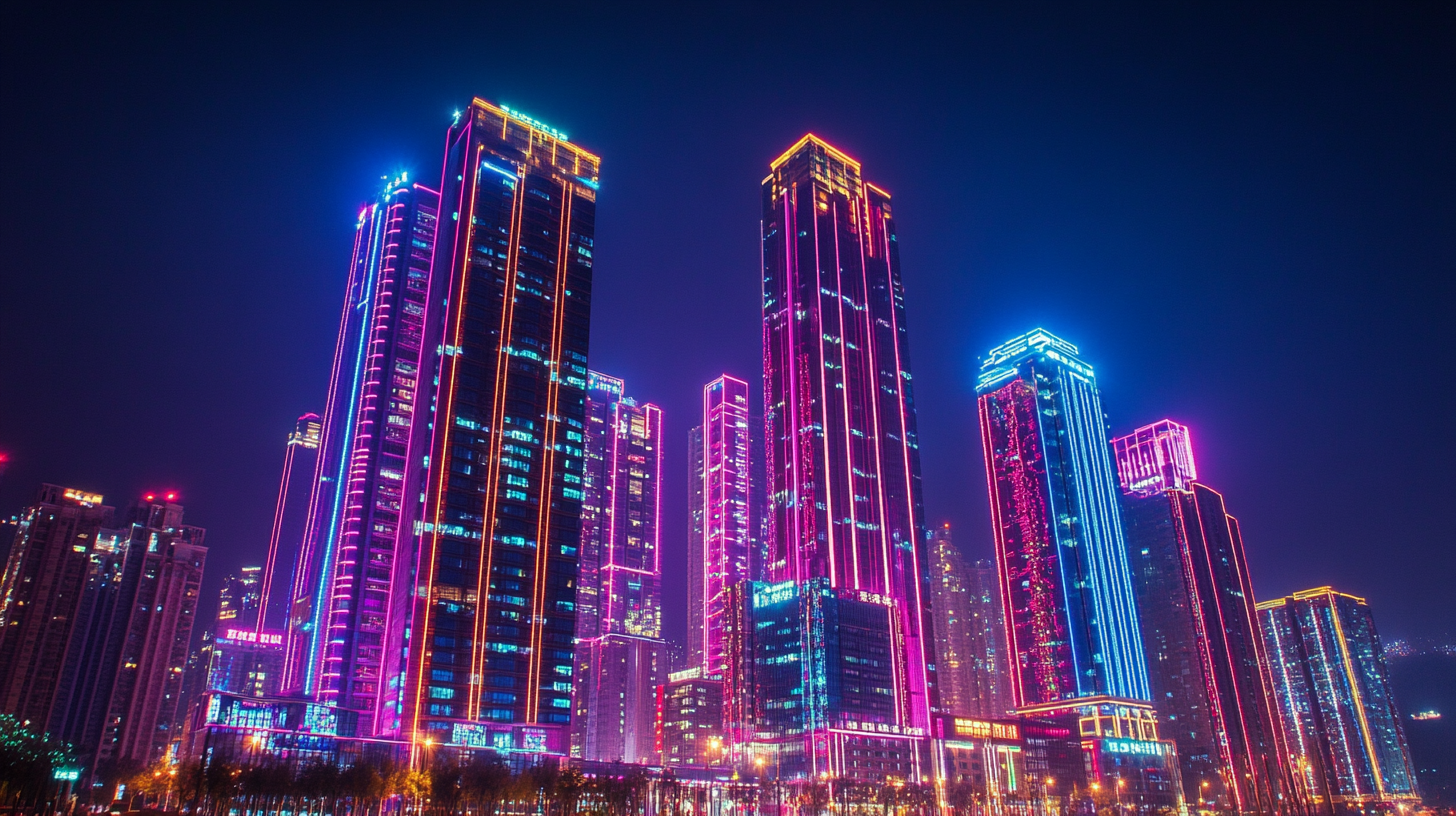5 Key Advantages of LED Lighting Solutions for Global Buyers in 2023
In recent years, the lighting industry has undergone a transformational shift, with LED lighting solutions emerging as a beacon of innovation and efficiency. As global buyers navigate the changing landscape of energy consumption and sustainability, it is crucial to understand the manifold advantages that LED technology offers. From reducing energy bills to enhancing visual comfort, LED lighting solutions are increasingly being recognized as the go-to choice for modern commercial and residential applications alike.
As we delve into the key advantages of LED lighting solutions in 2023, we will explore how these systems not only meet the needs of the environmentally conscious consumer but also provide significant long-term savings and durability. By embracing LED technology, buyers worldwide can elevate their lighting systems while contributing to global sustainability efforts. This blog aims to illuminate the compelling reasons why LED lighting solutions should be at the forefront of any buyer's strategy in the evolving marketplace.

Understanding the Energy Efficiency of LED Lights for Modern Applications
In 2023, energy efficiency remains a crucial factor for global buyers, particularly in the realm of lighting solutions. LED lights have emerged as a frontrunner in this category, offering unparalleled efficiency compared to traditional lighting options. Their ability to convert a higher percentage of energy into light, rather than heat, allows for significant energy savings. As modern applications demand more sustainable practices, LEDs stand out not only for their performance but also for their reduced environmental impact. Additionally, the longevity of LED lights enhances their energy efficiency benefits. With lifespans often exceeding 25,000 hours, LEDs require fewer replacements than incandescent or fluorescent bulbs. This durability translates to lower manufacturing and waste management costs, which aligns with the growing emphasis on sustainability among buyers. Furthermore, the reduced need for frequent replacements means that less energy is spent on production and transportation, further minimizing their carbon footprint. The versatility of LED technology also contributes to its energy efficiency. These lights can be adapted for a variety of applications, from residential homes to industrial settings, allowing for tailored solutions that optimize energy use. With dimmable options and advanced controls, users can adjust light levels according to specific needs, thus enhancing energy savings even more. As energy costs continue to rise and environmental regulations tighten, the shift towards LED lighting solutions is not just a trend, but a strategic choice for efficiency-oriented buyers in 2023.

The Long-Term Cost Savings Benefits of Switching to LED Lighting
In 2023, the shift towards LED lighting solutions is not just a trend; it's a strategic move for global buyers aiming for long-term cost efficiency. According to the U.S. Department of Energy, switching to LED lighting can save up to 75% on energy costs compared to traditional incandescent bulbs. This significant reduction in energy consumption translates to substantial savings, especially for businesses that operate in large facilities or utilize extensive outdoor lighting.
Moreover, the lifespan of LED lights also contributes to cost savings. On average, LED bulbs last about 25,000 to 50,000 hours, which is 25 times longer than incandescent bulbs. This longevity means fewer replacements and lower maintenance costs. A report from the National Electrical Manufacturers Association indicates that businesses upgrading to LED can avoid the costs associated with frequent bulb replacements, which can add up significantly over the years.
Additionally, the initial investment in LED technology is diminishing as manufacturing processes improve. The LED lighting market is expected to grow by 13.1% annually through 2024, according to market research firm MarketsandMarkets. This growth implies increased competition and innovation, further driving down prices for consumers. With technological advancements and the increasing availability of affordable LED products, buyers can achieve impressive long-term savings while also contributing to a more sustainable future.

Exploring the Environmental Impact Reduction with LED Solutions
In 2023, the push for environmentally responsible practices has never been more critical, and LED lighting solutions stand out as a pivotal player in this movement. These energy-efficient lighting alternatives significantly reduce energy consumption, which translates into lower greenhouse gas emissions. According to a report by the U.S. Department of Energy, widespread adoption of LED lighting could reduce the national electricity consumption for lighting by about 75%, saving over $30 billion annually. This remarkable reduction underscores LED technology's potential to contribute to a more sustainable future.
Moreover, the environmental impact of traditional lighting options extends beyond energy use. The manufacturing and disposal of incandescent and fluorescent bulbs often involve harmful materials like mercury and produce a considerable carbon footprint. In contrast, LEDs are not only free from toxic chemicals but also have a lifespan that is 25 times longer than traditional options. This durability results in less frequent replacements, further decreasing waste and resource depletion.
The transition to LED lighting also has implications for global energy policies. The International Energy Agency (IEA) predicts that, by moving to more energy-efficient technologies like LEDs, the global lighting demand could decrease significantly, saving approximately 1,300 terawatt-hours (TWh) per year by 2030. This shift not only aids in achieving climate goals but also enhances energy security as nations strive to meet their commitments to reduce carbon emissions. As global buyers increasingly prioritize sustainability, the adoption of LED solutions emerges as a compelling choice that aligns with both environmental stewardship and economic benefits.

Innovative Design Flexibility Offered by LED Technology
The innovative design flexibility offered by LED technology has revolutionized the lighting industry, making it a top choice for global buyers in 2023. According to a report by the International Energy Agency (IEA), the global LED market is expected to reach $143 billion by 2025, driven largely by the versatility of LED applications. This growth is fueled by their ability to adapt to various settings and purposes, including residential, commercial, and industrial uses.
One of the most compelling aspects of LED lighting is its adaptability in design. Unlike traditional lighting solutions, LEDs can be made in a variety of shapes, colors, and sizes, allowing architects and designers to incorporate them seamlessly into their projects. Research from the U.S. Department of Energy indicates that LED technology can reduce energy consumption for lighting by 75%, while offering the potential for tunable white lighting, which can enhance the mood of a space depending on what is required at any given moment.
Furthermore, the longevity of LED lighting significantly contributes to its design flexibility. With a lifespan of up to 25,000 hours or more, compared to just 1,000 hours for incandescent bulbs, LEDs reduce the need for frequent replacements, thus allowing design choices that consider long-term maintenance. In a market where sustainability is becoming increasingly important, the low environmental impact of LED lighting is an asset that can’t be overlooked. The ability to create innovative, energy-efficient designs while reducing carbon footprints positions LED solutions as a leading choice for forward-thinking buyers in 2023.
Enhancing Safety and Visibility through Advanced LED Features
In an era where safety and visibility are paramount, advanced LED lighting solutions are transforming the way global buyers approach their illumination needs. The sophisticated features of modern LED lights not only enhance the aesthetics of spaces but also prioritize the well-being of individuals and communities. With their ability to produce brighter light with less energy, LEDs are paving the way for safer environments in both urban and rural settings.
One notable advancement in LED technology is its adaptability to various lighting conditions. For instance, many LEDs now come equipped with sensors that automatically adjust brightness based on ambient light levels. This feature is particularly useful in road safety, as it ensures that streets and highways remain well-lit during nighttime while reducing glare to minimize distractions for drivers. Furthermore, the introduction of color-tuning capabilities in LEDs allows for better visibility in different weather conditions, improving overall safety for pedestrians and cyclists alike.
Moreover, the longevity and durability of LED lights contribute to enhanced visibility. With a longer operational lifespan compared to traditional lighting options, LEDs require less frequent replacements, which diminishes the risk of malfunctioning lights, particularly in critical areas such as emergency exits and public transport hubs. This reliability is essential in maintaining safe pathways and ensuring that emergency services can operate without obstruction. As global buyers prioritize safety and cutting-edge technology, integrating advanced LED features into their lighting solutions is not just a wise choice but a necessary step toward a brighter and safer future.

